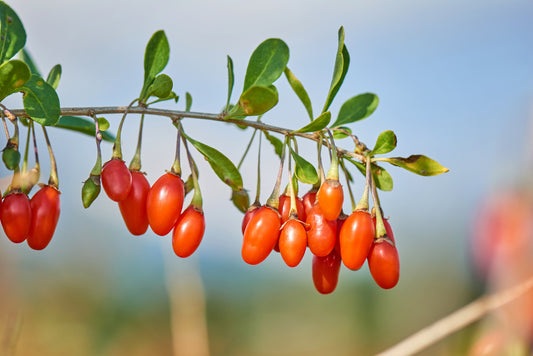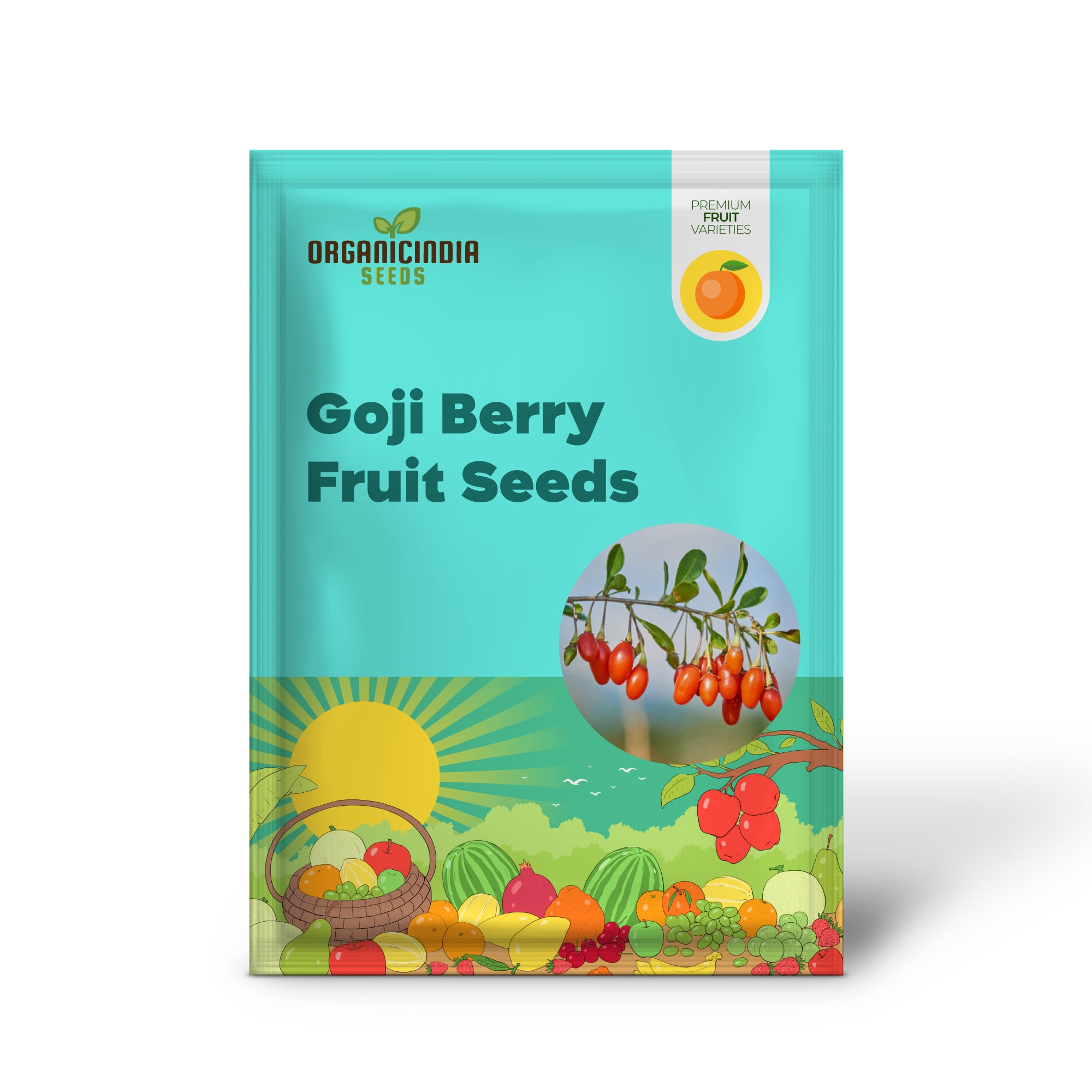



Livraison gratuite
Paiements sûrs et sécurisés
The Himalayan Tibetan Goji Berry (Lycium barbarum), often referred to as Wolfberry, is an incredibly versatile and nutrient-dense fruit that has been revered for centuries in traditional medicine and culinary use. Known for its vibrant red berries, Goji Berry is celebrated for its high antioxidant content, immune-boosting properties, and rich nutritional profile. The plant thrives in a variety of growing conditions and is an excellent choice for those looking to grow a superfood in their own garden. With 100 seeds, you can cultivate your own Goji Berry bush, providing not only a beautiful ornamental plant but also a harvest of healthy, delicious berries to enjoy fresh, dried, or in various recipes.
Key Features:
Growing Information:
Light:
Goji Berry bushes thrive in full sun but can tolerate partial shade. For optimal berry production and growth, it is best to plant them in a location that receives at least 6 hours of direct sunlight each day.
Soil:
Goji Berries prefer well-draining, slightly acidic to neutral soil with a pH of 6.0 to 7.5. The plant is quite adaptable and can grow in a variety of soil types, though it performs best in sandy or loamy soil with good drainage.
Planting Tips:
To start the seeds, soak them in warm water for 24-48 hours before planting to aid in germination. Plant the seeds in a well-draining potting mix, about ¼ to ½ inch deep. Keep the soil moist but not soggy, and place the seeds in a warm spot. Germination typically occurs within 2-3 weeks. Once the seedlings have several sets of leaves, they can be transplanted into the garden or into larger containers. Goji Berries can be grown directly in the ground or in raised beds. Space the bushes 3-4 feet apart to allow for their spreading growth.
Watering:
Goji Berries are relatively drought-tolerant once established, but they will produce more fruit with consistent moisture. Keep the soil moderately moist during the growing season, but be careful not to overwater, as waterlogged soil can harm the plant. Once established, the bush can withstand dry periods.
Temperature:
Goji Berry plants are hardy in USDA Zones 5-9, making them suitable for a wide range of climates. They can tolerate cooler temperatures, but frost can damage the berries. It’s best to plant in an area where the plant will be protected from heavy frost in winter.
Benefits:
Growing Zones:
Goji Berries are suitable for USDA Zones 5-9, making them ideal for temperate to mild climates. They thrive in areas with warm summers and cold winters but need protection from frost during flowering and fruiting.
How to Use in the Garden:
Conclusion:
The Himalayan Tibetan Goji Berry (Lycium barbarum) is an incredibly rewarding and versatile plant to grow. With 100 seeds, you can cultivate a productive, nutrient-packed bush that not only enhances your garden’s beauty but also provides a bountiful harvest of delicious, antioxidant-rich berries. Perfect for gardeners in USDA Zones 5-9, Goji Berries are easy to grow, low-maintenance, and offer a range of health benefits. Whether you're adding them to your fruit garden, edible landscape, or container garden, Goji Berries are sure to become a cherished part of your garden and your diet.
Choisir les options

